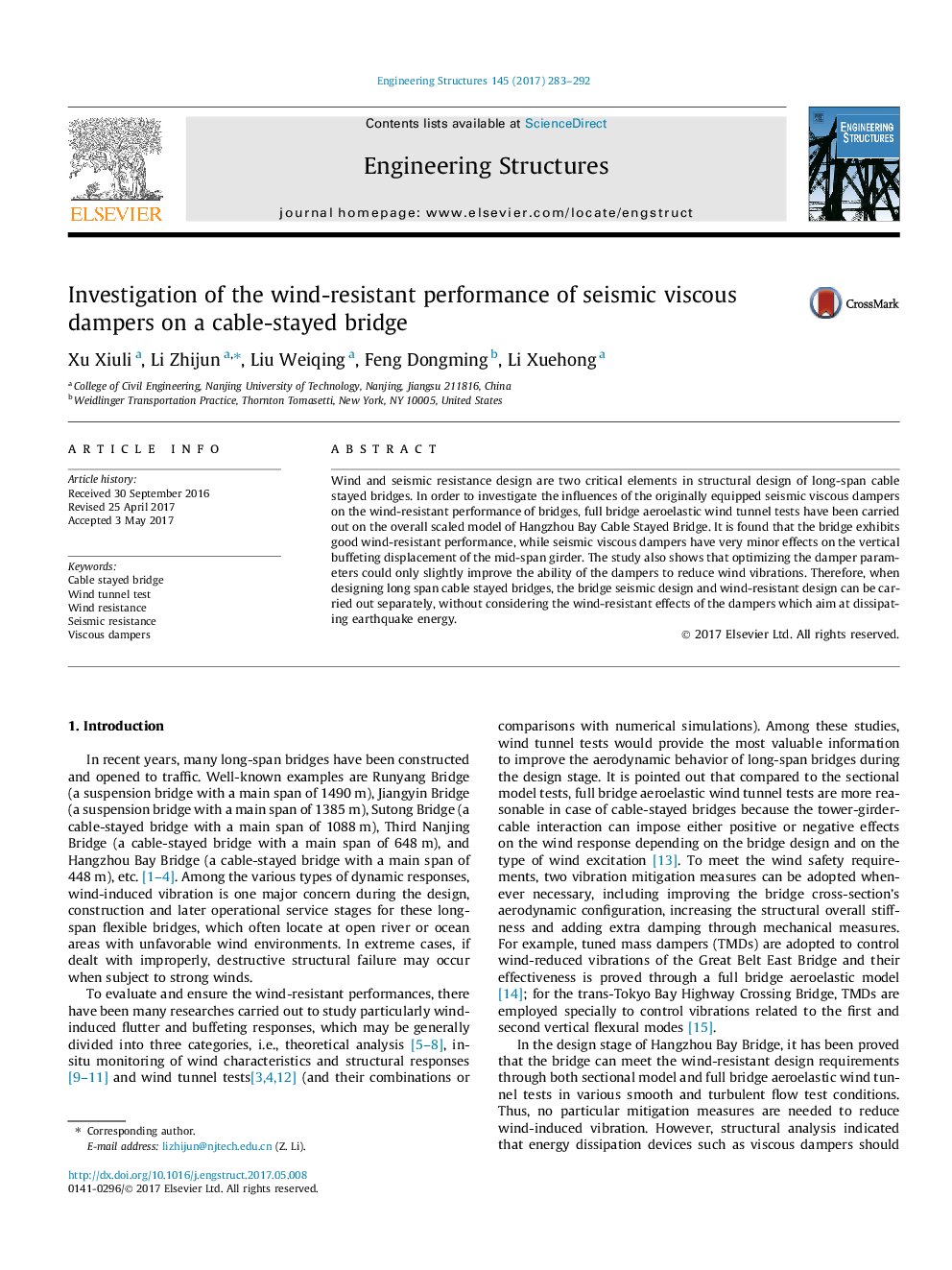| Article ID | Journal | Published Year | Pages | File Type |
|---|---|---|---|---|
| 4920172 | Engineering Structures | 2017 | 10 Pages |
Abstract
Wind and seismic resistance design are two critical elements in structural design of long-span cable stayed bridges. In order to investigate the influences of the originally equipped seismic viscous dampers on the wind-resistant performance of bridges, full bridge aeroelastic wind tunnel tests have been carried out on the overall scaled model of Hangzhou Bay Cable Stayed Bridge. It is found that the bridge exhibits good wind-resistant performance, while seismic viscous dampers have very minor effects on the vertical buffeting displacement of the mid-span girder. The study also shows that optimizing the damper parameters could only slightly improve the ability of the dampers to reduce wind vibrations. Therefore, when designing long span cable stayed bridges, the bridge seismic design and wind-resistant design can be carried out separately, without considering the wind-resistant effects of the dampers which aim at dissipating earthquake energy.
Related Topics
Physical Sciences and Engineering
Earth and Planetary Sciences
Geotechnical Engineering and Engineering Geology
Authors
Xu Xiuli, Li Zhijun, Liu Weiqing, Feng Dongming, Li Xuehong,
